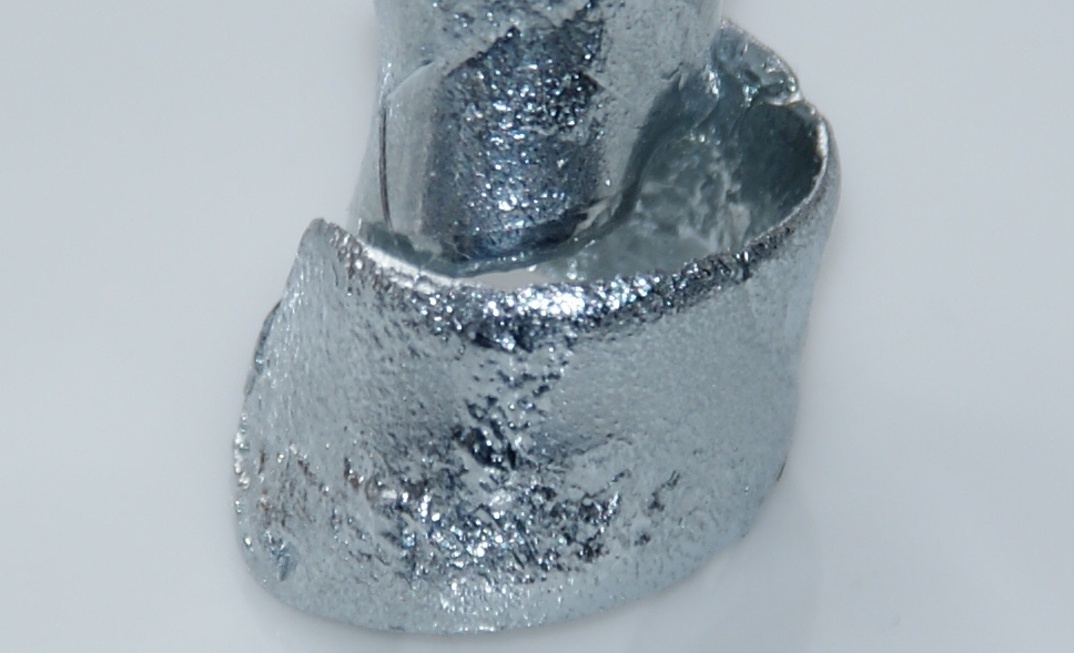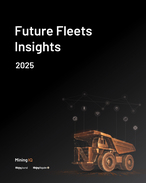The global energy transition is reliant on the mineral resources sector, with growing demand for things such as solar panels, wind turbines and battery storage underscoring a growing need for sustainable supplies of critical minerals.
However, while Australia produces 14 of the 31 critical minerals listed on the Critical Minerals List, some lesser-known critical minerals, such as gallium and arsenic, are in short supply.
That is where the CSIRO comes in.
Australia's national science authority has been working across the sector and the value chain, from exploration to processing and beyond, to maximise the country's position as a global supplier of critical minerals.
YOU MIGHT ALSO LIKE
Both gallium and arsenic are naturally occurring elements that are not mined directly but are by-products of the processing of other minerals.
Gallium
Global demand for gallium is about 708t per annum.
It generally occurs in small quantities in bauxite.
CSIRO senior research consultant Dr Chris Vernon told Australia's Mining Monthly that gallium was often a by-product of aluminum extraction and was found in bauxite at around 50 parts per million.
"That's hardly worth going for on its own," he said.
"But if they are already digging up the bauxite they could end up with tonnes of gallium."
Vernon said some of that gallium would report to the liquor and could be harvested through ion exchange or solvent extraction.
Vernon believes some recent high-gallium clay discoveries in Australia could lead to potential gallium mines.
"Australia needs to process these minerals into usable forms to leverage geopolitical advantages," he said.
"There are a few companies out there who think that is attractive enough to pursue a gallium mine, even though there is no gallium mine on the planet."
Vernon said with such high concentrations in the clay, maybe they had a shot at it.
He reckons there is at least one company in Australia developing technology to extract gallium from clays.
"They might have been drilling for something else, or looking for the usual suspects of nickel and copper, but they obviously did a full spectrum analysis," he said.
"Of course, nobody in the old days would do the full spectrum because they didn't really care, they were just looking for the usual suspects in nickel and gold.
"But nowadays, because analysis is relatively cheap, people are putting in everything for testing."
Vernon said it was not like miners were looking for gallium in a particular type of clay, it was that the clay and aluminosilicate were often where the gallium was.
"Once you start looking, you start finding," he said.
China imposed export restrictions on gallium and germanium in mid-2023 and outright banned exports of gallium, germanium and antimony to the US in 2024.
It also banned the export of gallium-related technology.
Gallium is fetching $1014 per kg.
Some companies have made moves in the right direction.
Rio Tinto has plans to build a pilot plant in Quebec to produce up to 3.5tpa of gallium, while Canada's Neo Performance Materials recycles semiconductor-grade gallium.
Closer to home, Australia-based MTM Critical Metals is also building a 1tpa demo plant in Texas to test its Flash Joule Heating technology.
The advanced electrothermal process can extract metals including lithium from spodumene, gallium from scrap and gold from e-waste.
In Western Australia, explorer Nimy Resources is drilling for gallium, following a chance discovery of the mineral in a sample.
According to Nimy Resources executive director Christian Price, Nimy could be an alternative source of gallium outside China.
Nimy is working with researchers from Curtin University's School of Mines to further study gallium extraction techniques.
"It's one of those markets where we start to see gallium, you start to see the uses, you'll start to see it everywhere," Price said.
"Gallium is going to be on the lips of a lot more technology manufacturers in the future and we'll start to understand the criticality of that to our modern world."
Arsenic
Vernon said while arsenic was a byproduct, some arsenic ores could be found in the field, however, more often than not it was associated with gold.
"You'll often find arsenic associated with gold and that stuff generally just gets piled up on the side," he said.
"And you wish you didn't have it, but you know, it's out there and there seems to be plenty of it."
Arsenic is a naturally occurring element commonly found in rocks, soils, water, air, and biological materials and an impurity found in metallic ores.
It is toxic in large doses.
A challenge for miners is to produce enough arsenic to meet economic demands while keeping arsenic emissions at zero.
Arsenic does not melt but sublimes into gas at high temperatures.
It is rarely found in its pure form but is typically found as a component of sulphur-containing minerals such as arsenopyrite and pyrite.
Arsenic can also be obtained from copper, gold, lead smelter flue dust or from roasting arsenopyrite.
Overseas, arsenic has been commercially recovered from realgar and orpiment in China, Peru and the Philippines; cobalt-arsenide ores in Morocco; and from copper-gold ores in Chile.
Arsenic can also be recovered from enargite, a copper mineral.
In 2022, just 61,000t of arsenic was produced.
According to researcher Ian Rae, the first arsenic produced in Australia was an inadvertent by-product of gold mining.
Some arsenic mines were then opened to supply the emerging gold mining sector.
Rae said the legacy of those mines was a series of contaminated sites across the country.
A way forward
Vernon said he did not yet know how the government planned to implement its $1.2 billion critical mineral stockpile plan.
The premise is quite simple: government funds will be used to buy and hold reserves of critical minerals such as lithium, rare earths, cobalt, nickel and graphite.
"Whether it's just sticking a tarp over rich piles or processing it and sticking it in a vault somewhere, I don't know," he said.
"You could also just leave it in the ground, which puts it in reserve."
Vernon said the issue was in getting it out of the ground and turning it into a form that other want.
"The mere act of finding something isn't a fantastic geopolitical advantage for us, but if we were able to get it out of the ground and process it into something that a manufacturing nation would want to buy, that's where our advantage lies," he said.
"Yes we have heaps of critical metals but it's a matter of getting them into a supply chain."
Vernon said he and his fellow researchers at CSIRO and Geoscience Australia were upbeat about Australia's opportunities.
He said the focus was on making technologies to extract, refine and stage manufacturing cheaper, cleaner and greener and make it more attractive to do those things in Australia.

























